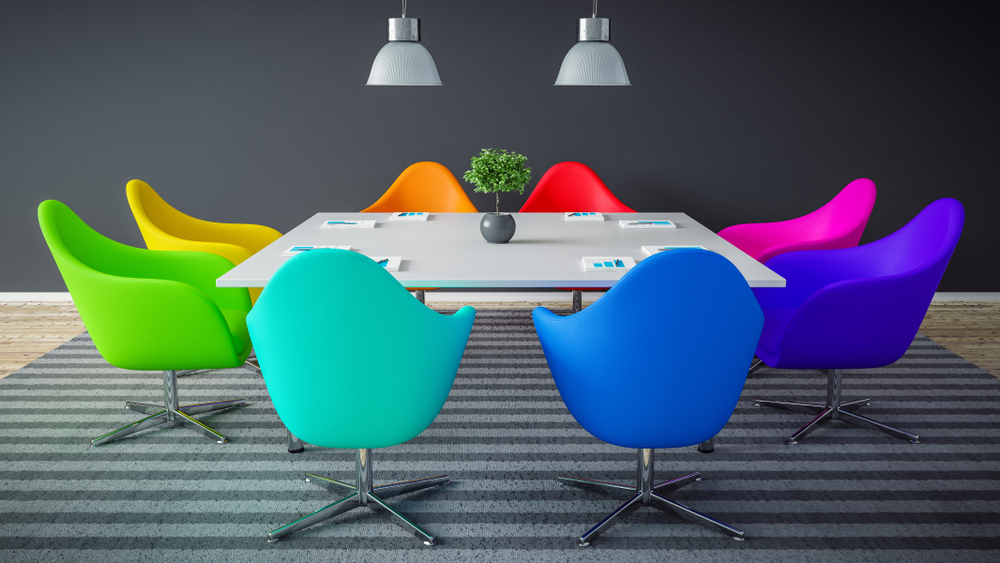Creating an effective and productive work space is essential to increasing employee engagement. Whether your company has 5 or 500 employees, company culture is becoming increasingly important to applicants when they are looking for a job.
Companies are able to add value to their space by creating a well-designed office. Because people spend the majority of their day at work, it is important to provide them with a space that is both influential and aesthetically pleasing.
Designing a cohesive office space can be tricky. Companies need to be mindful of how an office’s setup can impact the company’s overall culture and productivity. A well-designed office needs to find a balance between encouraging collaboration and ensuring employees have a quiet place to work. Below are three ways companies can set up their offices to improve employee productivity.
1. Ensure Your Conference Rooms Are Influential
Over the years, employees have developed a negative view toward meetings. They are beginning to see meetings as an inconvenient waste of time. One way to offset these feelings is by reiterating that meetings can provide an opportunity for them to contribute new thoughts or ideas.
Another way to prevent this idea from taking hold is to create conference rooms that are modern yet inviting. Choosing a paint color other than white can help create an environment that is productive and thought-provoking. According to a recent study, the color of walls in an office space can affect an employee’s mood. In the study, the majority of people said they felt comfortable in office spaces that were painted blue or blue-green more so than any other color.
But, painting the walls may not be a feasible option for some organizations. To get the same effect, try adding paintings that incorporate blue and green accents to add calming colors to the room.
2. Create a Welcoming Reception Area for Visitors
Most companies have a designated reception area to receive guests, but if your company is on the smaller side, all employees are expected to fill that role as needed. Many employees may think that this is a waste of their time or view it as an imposition, but this is actually highly valuable because it creates a culture of hospitality and appreciation.
Having different employees welcome guests is helpful to them but also cultivates a positive atmosphere—and impacts office visitors. Visitors can benefit from a friendly and accepting experience, making them feel more welcome. If your company is smaller and doesn’t have a designated receptionist or welcome area, try putting a few chairs by the door so your guests have a place to sit while they are waiting.
3. Establish a Designated Eating Area
Throughout the workday, employees are so busy that they barely have time to look up from their computers. It seems the only exception is food. Establishing a welcoming space for employees to eat their lunch can encourage the workforce to converse with other departments. Consider adding a large table in your kitchen area; this will help employees mix and mingle while eating their lunch and help build strong relationships in the office.
While many employees find eating at their desks to be more prudent, recent studies have shown that sitting in your desk chair all day can be bad for your health. By creating a designated kitchen area, it allows your employees to get up from their desks and communicate with others.
| Who owns office design? The answer is revealed in this *FREE* report: Office Design & Ergonomics. |
Providing this alternative option for employees can help boost their productivity throughout the day, as well as decrease the chance of employee burnout. While not all offices can provide employees with a kitchen, encourage employees to go out to lunch, or provide additional seating options that will allow them to step away from their desks.
An office setup that promotes productivity is becoming increasingly important to Millennials and Gen Zs as they continue to enter the workforce. Creating conference rooms that facilitate ideas and spark the imagination, a reception area that is welcoming and warm, and a designated kitchen area can help you increase employee productivity and motivation.
By implementing these three tips into your work space, you will encourage your employees to be much more engaged and productive.
 Matt Thomas is the President of Indianapolis-based WorkSmart Systems, Inc., which he founded in 1998. He is active with the National Association of Professional Employer Organizations (NAPEO) and has dedicated more than 20 years to the PEO industry dating back to his early career with industry leaders ADP and NovaCare Employee Services. Matt Thomas is the President of Indianapolis-based WorkSmart Systems, Inc., which he founded in 1998. He is active with the National Association of Professional Employer Organizations (NAPEO) and has dedicated more than 20 years to the PEO industry dating back to his early career with industry leaders ADP and NovaCare Employee Services. |

